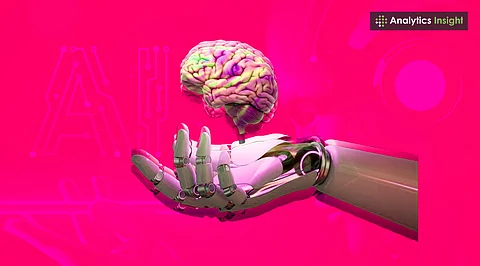

AI comes in multiple forms, including narrow AI and general AI
Most current technologies use narrow AI for specific tasks.
Understanding these types helps in knowing where AI is heading.
Artificial Intelligence, or AI, has become a common term these days, infiltrating businesses, homes, and daily life in general. However, this is a vast domain and has different varieties depending on how the machines think, learn, and act.
Learning about the different types of AI can help understand its operation and the future this technology is headed towards. Here is a broad overview of its primary categories:
Also Read: Narrow AI vs. General AI- What’s Next for the Future of Tech?
Experts often classify artificial intelligence into three types based on its capability:
Narrow AI is the most common type that performs one task at a time and cannot learn outside its specific program. It powers voice assistants, search engines, and chatbots. It. For example, a navigation app like Google Maps can guide routes but cannot compose music.
Some applications of Narrow AI include:
Spam filters
Product recommendations
Facial recognition
Virtual assistants like Alexa and Siri
Most AI tools today fall under this category. According to Statista, over 80% of AI systems in 2024 were artificial narrow intelligence (ANI) applications.
While General AI is still a theoretical concept, researchers are gearing up to design systems that can think, reason, and learn in ways similar to humans. If developed, these machines would gain self-awareness and make independent decisions without being programmed explicitly for each task.
Super AI transcends human intelligence. It is also a theoretical concept where robots not only get quicker, more intelligent, and creative than human beings, but also begin developing emotions and beliefs. Super AI will be capable of anticipating events and make complex decisions through continuous learning and behaviour adaption.
Another way to classify artificial intelligence is based on its features and how it operates.
Reactive machines are one of the earliest ANI systems ever created. They only respond to present inputs with specific outputs and do not store memories or learn from past experiences. For example, IBM's Deep Blue. It is a chess computer that defeated Chess Champion Garry Kasparov in 1997.
Limited memory AI systems are machine learning models that store previous records and learn through experience. Most of today's machines belong to this category. Self-driving cars and chatbots are some examples. They observe their surroundings, adapt, and quickly make appropriate decisions. For example, a self-driving car automatically adjusts its speed depending on the traffic.
The theory of mind AI is still a work in progress. When developed, it would be capable of empathizing and responding much like a human would, while taking a person's mood and intent into account. Advancements to this degree can have potential applications, like employing emotionally equipped bots in healthcare and customer service for query solving.
Self-aware AI is a dream project of many researchers. This AI will be self-conscious and aware of its existence, capable of creating beliefs, desires, and emotions. However, striving to achieve this can open a new can of worms. It might lead to ethical and moral concerns over the rights of AI.
Also Read: Artificial Narrow Intelligence: Challenges and Best Practices
According to McKinsey’s report published in 2024, the adoption of artificial intelligence has dramatically increased to 72% within a year. Some artificial intelligence applications include:
Personalised recommendations for viewers browsing the online retail stores.
In the healthcare industry to detect diseases at an early stage.
Curating playlists or getting recommendations on streaming platforms.
There are several types of AI, ranging from simple chatbots to self-aware models. By thoroughly understanding them, researchers can better comprehend their implications and limitations.
While narrow AI is widely utilized today, technology is quickly evolving. Scientists are developing more advanced forms of AI, significantly increasing the scope for artificial intelligence applications.
